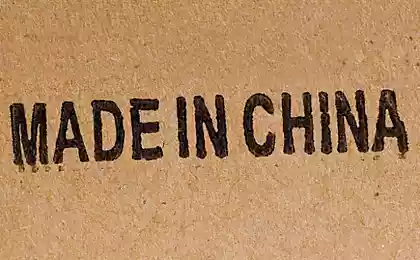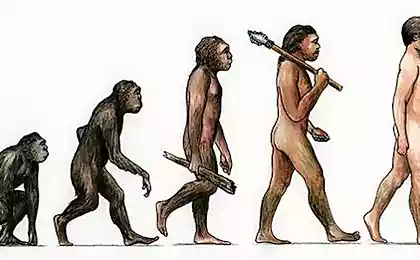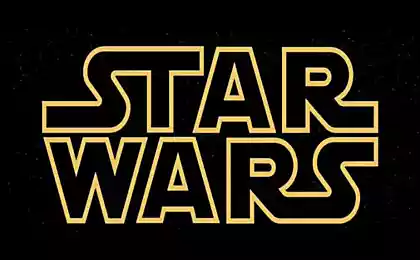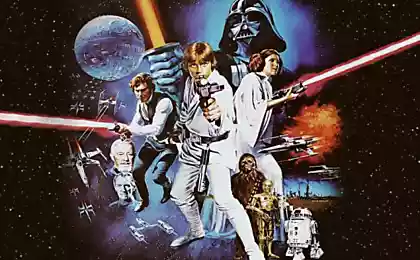726
Evolution players
please do not tear down, finish, accomplish your goal!
Each era - his musical carrier. The sixties and seventies were marked by ribbons rolls and records; Eighties were marked by the advent of cassettes. Time passed - changing media, audio playback became portable, technologically. Gone is the romance, practicality and remained bytovuha - music transferred to a digital format. We stopped going to the friends view to record music from an actual cassette. Some of your friends are older still he recalls how schoolboy pulled another heaviest bobinnik to rewrite the album Queen. The plates are unnecessary junk in the country, waiting for the enthusiast who will transfer vinyl to digital. Do you remember whether the younger generation about rewinding tapes pencils? And as CD-players, who hangs when walking fast, and that the music is not interrupted, we tried to go gently? Ah, the times gone by ...
Trying to make a rough plan for the development of the music industry in the coming years - absolutely not a simple matter. That's what, for example, at the dawn of the era of portable players currently have imagined Present splendor of technically advanced devices? It is thought the creators of the first cassette bezekrannyh that a couple of decades from a small "empetrishnika" will not only listen to music, but to go online, check email, view photos or videos? So that no one can predict what will happen in five or ten years - the industry can throw an unexpected trick. But we know how it all began.
At first it was SONY
That we now have a "iPods", "ayrivery" and stotyschmilenov brand under which produced players. But thirty years ago such a thing as a portable player, did not exist at all. There were weighty spool and cassette recorders, turntables. There was no question about korotaniya time on the road for listening to your favorite tracks. But the idea was somewhere in the noosphere, and waited for his genius - enterprising companies could only realize what all so long wanted. The first hand to the "pocket audio" came from the Japanese restless.
So far it is not known exactly how it was created the first portable player. There are two major and quite implausible versions: the first of them, engineer Nobutoshi Kihara made it to the head by Sony, so he could listen to music on long trains across the ocean. On the second - the idea of a portable cassette gave himself Akio Morita (founder of Sony). Watching his offspring for days listening to the stereos of their favorite "The Beatles' and Elvis, he need for a device for listening to music that you can take everywhere with you. Moreover, he insisted that the player should not support recording function, but only to play music. And it was a bold move, considering that most of the "desktop" cassette just bought up because of the ease of copying music.
Sony guess the desires of the public. The result - an absolute bestseller. In 1979, a small cassette player Walkman TPS-L2 was released. Although he would be the first of its kind, it costs much - $ 200. Over time, the Walkman TPS-L2 was recognized as one of the greatest inventions of the company. Yes, that really there - in the history of the whole. According to the rating of PC World, the top 50 of the devices created by mankind, the first place was awarded L2, wins the gold medal even the iPod. On laurels we decided not to stop: 1980 gave the world the first prototype of the CD. And four years later it appeared the first portable model - Sony Discman D50. It cost accordingly - 500 bucks.
Volume first CD is 640 MB, and this figure does not come from the ceiling. Morita conducted a study in which was very interesting data. It turned out that potential buyers CD-ROM - the people, for the most part, listening to classical music. Taking the most popular in Japan "Ninth Symphony" by Beethoven, the duration of which is nearly 74 minutes, the engineers moved 74 minutes 16-bit sound bytes, and received 640 MB. While many still hold the opinion that such a billet size is only a technical limitation, it is not - over time, 700 and even 800 -megabaytnye drives, although the laser parameters have not changed. One way or another, but Sony has always focused on the needs of the buyer, and the people's path, as we know, grows long. This is the secret of success of the company during the period from 70 of the 90 years for which the vendor has gained an impeccable reputation and a huge respect in the eyes of the consumer.
And the first will be last
Alas, in the nineties the Japanese did no better. The company made a bid for its own ATRAC audio format, and new media Mini Disc. Work in these areas could easily turn into a success. Mini Disc has been significantly less than conventional CD, consequently, as are the players for them. The first player on the new media, Sony Walkman MD MZ1, was compact in comparison with the first CD-models. But exorbitant cost of money - $ 750.
In general, a good venture suffered a fiasco. In Japan, the new invention was greeted warmly enough, but the unyielding American market flatly rejected a new creation Sony. Sales of mini-disks in Russia were more than modest, not to say that absolutely zero.
The market had plenty of cheap CD-player, which was much easier to use than the new Mini Disc, the new format ATRAC. Failure ATRAC - the need to transcode music from CDs to digital format - individual files. This need for doubtful took up five minutes of time on the distillation of each record. On the one hand, it was a breakthrough - records can be stored in a compact heap, and on the computer. But it emerged plus minus: in those days computers were small, they were very slow and space on hard drive is not enough for music collections.
In addition, the music in ATRAC system was protected by copy protection OpenMG - invention of Sony. Such records could not listen to another computer or player. Members, this situation does not suit.
MP3 GOES LARGE
If the failure of MD-player ATRAC was supposed to, the refusal to support released in 1995 MP3 was colossal stupidity. Many companies, including Sony, underestimated the prospects for MP3. The people understood the charm of the new format. By '98 hard disk may already contain a small audio library, and computers can handle the encoding of audio CDs to MP3. In addition, the relatively small files could easily be sent via the Internet. And who then it needed gemorroyny ATRAC? No one, except that of the Sony.
In 1998, a little-known Korean company Saehan Information Systems released its first MP3-player called MPman F10. No disc - was used in the flash memory of 32 megabytes. When lousy bitrates in this volume found room quite a music album. A low price and ease of filling music via LPT port showed that in the very near future these players will have to be mega.
A year later came the first MP3-player on a hard disk - HanGo PJB-100. Hefty as a brick (150h80h26 mm) incredibly expensive ($ 800), but with the memory of 4 and 8 gigabytes, it fits perfectly decent library. Approximately 4,500 minutes of music in bit rate of 128 kbit / s.
SAY HELLO TO iPOD
The year 2001 was a turning point, if not, then certainly a milestone for the entire industry of portable players. That year not only changed the way we listen to music - has changed the whole music industry. Rather strange and gloomy Japanese Korean players their way to the conquest of the world began the legendary iPod. Known for its sverhprodumannymi Apple products came to the creation of a player thoroughly: to "iPod" attached great headphones attached a mechanical scroll wheel and provided excellent audio chip. The wheel was soon touch - so it remains to this day. In addition, Apple the world's first smart enough to equip one player, 8-inch hard drive 5 GB, previously used only in subnotebooks.
At that time there were already players in the capacious hard drives, but they cost a lot of indecent were hefty and the volume of 20 gigabytes while the majority was simply not needed. IPod has become the golden mean between the capacity, size and adequate price. Plus, the design of Apple's little one could remain indifferent. And Sony, having lost all credibility and respect of the public, went into hibernation for almost five years, during which we have not seen any standing product. Awareness of errors came rather late: only last year it was decided to abandon the ATRAC terribly brake SonicStage. Well, better late than never.
Race
In the following eight years, the market of portable players grew much faster than in the nineties. There was a demand on an MP3 - and then it was a matter of technique. Father compact video players, the company Archos, PMP the first set in full color screen. Since 2004, the fashion on the video - any kid is now had to not only play music but also movies. Players overgrown functions - in Rio Karma adds support for alternative format OGG, who in 2003 was in vogue. Then Archos made completely useless feint, crossed player and a simple digital camera - AV300. The idea, however, failed completely.
Creative Trying to make the player a smart player, too, was not a success - Nedo-UMPC ZEN PMC in 2004 looked cool, but was absolutely no use to anyone. Firstly, because of the size, and secondly, because of the Windows CE. Krohotulka Diva GEM has brought into the world player Bluetooth - as usual, in 2004, it was unclaimed.
But 2005 gave us the iPod nano - after all, the best player of our time, which sold millions of copies and has survived three redesign. Attractive appearance, small size, good price, the quality of Apple - that's the whole secret of success.
Well, what happened next - I think, you know. Any touch screens, "Thaci iPods», Rolly and other such rubbish. For the development of media players are generally very interesting to watch - you never know how things turn out - will be whether the new trendmeyker or standard will be a new, unknown function? Guessing even a year ahead strongly difficult.
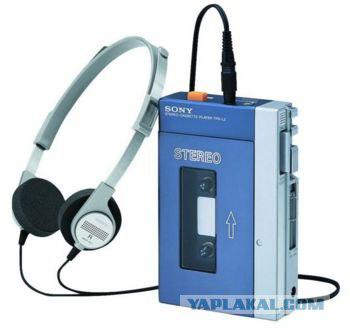
1979 - Sony Walkman TLS-L2 - $ 200 - the first portable cassette player

1984 - Sony Discman D50 - 500 - the first portable CD-player
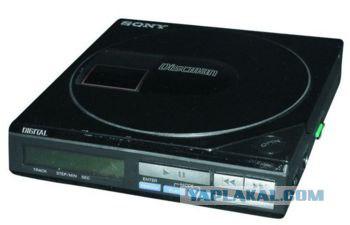
1992 - Sony Walkman MD MZ1 - $ 750 - player on MD
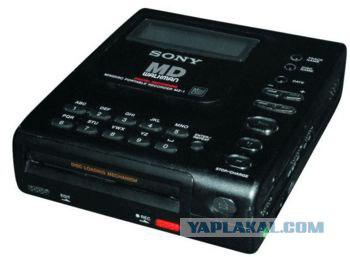
1998 - Saehan F10 - $ 250 - the first MP3-Flash player
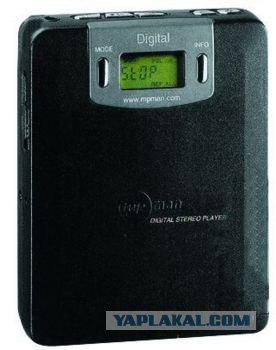
1999 - HanGo PJB-100 - $ 800 - the first HDD-player
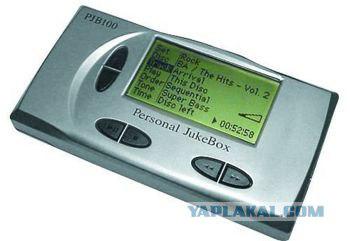
2001 - Apple iPod - the first player on 1, 8-inch hard disk
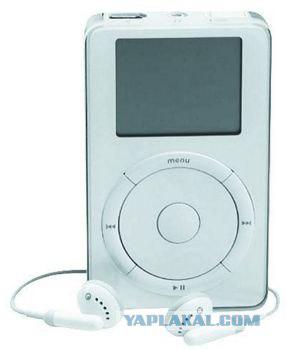
2002 - Apple iPod 2G - first with touch control -

2002 - Archos Jukebox Multimedia - the first player with a color screen -

2002 - Bang & Olufsen Beosound 2 - the first fashion - $ 1,200
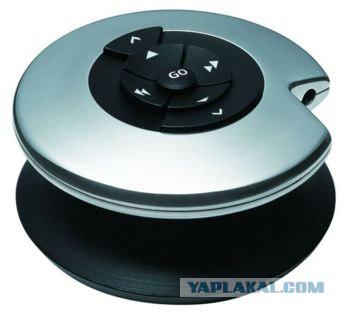
2003 - Rio Karma - the first multi-player -
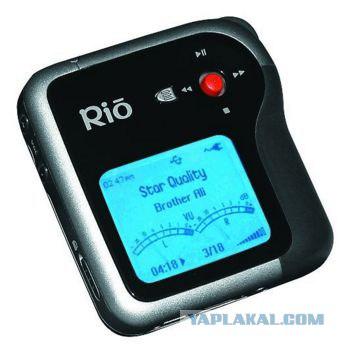
2004 - Archos AV300 - the first player-karmkorder
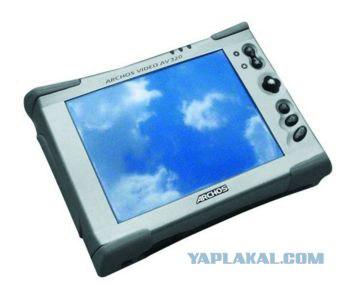
2004 - Creative ZEN PMC - $ 600 - the first player on OS
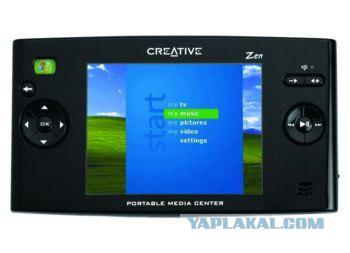
2004 - Diva GEM -First player with Bluetooth - $ 270
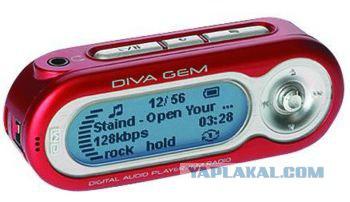
the latter
2005 - Apple iPod Nano - $ 200 - the best player of our time
Posted in [mergetime] 1305046753 [/ mergetime]
from me!

Source:
Each era - his musical carrier. The sixties and seventies were marked by ribbons rolls and records; Eighties were marked by the advent of cassettes. Time passed - changing media, audio playback became portable, technologically. Gone is the romance, practicality and remained bytovuha - music transferred to a digital format. We stopped going to the friends view to record music from an actual cassette. Some of your friends are older still he recalls how schoolboy pulled another heaviest bobinnik to rewrite the album Queen. The plates are unnecessary junk in the country, waiting for the enthusiast who will transfer vinyl to digital. Do you remember whether the younger generation about rewinding tapes pencils? And as CD-players, who hangs when walking fast, and that the music is not interrupted, we tried to go gently? Ah, the times gone by ...
Trying to make a rough plan for the development of the music industry in the coming years - absolutely not a simple matter. That's what, for example, at the dawn of the era of portable players currently have imagined Present splendor of technically advanced devices? It is thought the creators of the first cassette bezekrannyh that a couple of decades from a small "empetrishnika" will not only listen to music, but to go online, check email, view photos or videos? So that no one can predict what will happen in five or ten years - the industry can throw an unexpected trick. But we know how it all began.
At first it was SONY
That we now have a "iPods", "ayrivery" and stotyschmilenov brand under which produced players. But thirty years ago such a thing as a portable player, did not exist at all. There were weighty spool and cassette recorders, turntables. There was no question about korotaniya time on the road for listening to your favorite tracks. But the idea was somewhere in the noosphere, and waited for his genius - enterprising companies could only realize what all so long wanted. The first hand to the "pocket audio" came from the Japanese restless.
So far it is not known exactly how it was created the first portable player. There are two major and quite implausible versions: the first of them, engineer Nobutoshi Kihara made it to the head by Sony, so he could listen to music on long trains across the ocean. On the second - the idea of a portable cassette gave himself Akio Morita (founder of Sony). Watching his offspring for days listening to the stereos of their favorite "The Beatles' and Elvis, he need for a device for listening to music that you can take everywhere with you. Moreover, he insisted that the player should not support recording function, but only to play music. And it was a bold move, considering that most of the "desktop" cassette just bought up because of the ease of copying music.
Sony guess the desires of the public. The result - an absolute bestseller. In 1979, a small cassette player Walkman TPS-L2 was released. Although he would be the first of its kind, it costs much - $ 200. Over time, the Walkman TPS-L2 was recognized as one of the greatest inventions of the company. Yes, that really there - in the history of the whole. According to the rating of PC World, the top 50 of the devices created by mankind, the first place was awarded L2, wins the gold medal even the iPod. On laurels we decided not to stop: 1980 gave the world the first prototype of the CD. And four years later it appeared the first portable model - Sony Discman D50. It cost accordingly - 500 bucks.
Volume first CD is 640 MB, and this figure does not come from the ceiling. Morita conducted a study in which was very interesting data. It turned out that potential buyers CD-ROM - the people, for the most part, listening to classical music. Taking the most popular in Japan "Ninth Symphony" by Beethoven, the duration of which is nearly 74 minutes, the engineers moved 74 minutes 16-bit sound bytes, and received 640 MB. While many still hold the opinion that such a billet size is only a technical limitation, it is not - over time, 700 and even 800 -megabaytnye drives, although the laser parameters have not changed. One way or another, but Sony has always focused on the needs of the buyer, and the people's path, as we know, grows long. This is the secret of success of the company during the period from 70 of the 90 years for which the vendor has gained an impeccable reputation and a huge respect in the eyes of the consumer.
And the first will be last
Alas, in the nineties the Japanese did no better. The company made a bid for its own ATRAC audio format, and new media Mini Disc. Work in these areas could easily turn into a success. Mini Disc has been significantly less than conventional CD, consequently, as are the players for them. The first player on the new media, Sony Walkman MD MZ1, was compact in comparison with the first CD-models. But exorbitant cost of money - $ 750.
In general, a good venture suffered a fiasco. In Japan, the new invention was greeted warmly enough, but the unyielding American market flatly rejected a new creation Sony. Sales of mini-disks in Russia were more than modest, not to say that absolutely zero.
The market had plenty of cheap CD-player, which was much easier to use than the new Mini Disc, the new format ATRAC. Failure ATRAC - the need to transcode music from CDs to digital format - individual files. This need for doubtful took up five minutes of time on the distillation of each record. On the one hand, it was a breakthrough - records can be stored in a compact heap, and on the computer. But it emerged plus minus: in those days computers were small, they were very slow and space on hard drive is not enough for music collections.
In addition, the music in ATRAC system was protected by copy protection OpenMG - invention of Sony. Such records could not listen to another computer or player. Members, this situation does not suit.
MP3 GOES LARGE
If the failure of MD-player ATRAC was supposed to, the refusal to support released in 1995 MP3 was colossal stupidity. Many companies, including Sony, underestimated the prospects for MP3. The people understood the charm of the new format. By '98 hard disk may already contain a small audio library, and computers can handle the encoding of audio CDs to MP3. In addition, the relatively small files could easily be sent via the Internet. And who then it needed gemorroyny ATRAC? No one, except that of the Sony.
In 1998, a little-known Korean company Saehan Information Systems released its first MP3-player called MPman F10. No disc - was used in the flash memory of 32 megabytes. When lousy bitrates in this volume found room quite a music album. A low price and ease of filling music via LPT port showed that in the very near future these players will have to be mega.
A year later came the first MP3-player on a hard disk - HanGo PJB-100. Hefty as a brick (150h80h26 mm) incredibly expensive ($ 800), but with the memory of 4 and 8 gigabytes, it fits perfectly decent library. Approximately 4,500 minutes of music in bit rate of 128 kbit / s.
SAY HELLO TO iPOD
The year 2001 was a turning point, if not, then certainly a milestone for the entire industry of portable players. That year not only changed the way we listen to music - has changed the whole music industry. Rather strange and gloomy Japanese Korean players their way to the conquest of the world began the legendary iPod. Known for its sverhprodumannymi Apple products came to the creation of a player thoroughly: to "iPod" attached great headphones attached a mechanical scroll wheel and provided excellent audio chip. The wheel was soon touch - so it remains to this day. In addition, Apple the world's first smart enough to equip one player, 8-inch hard drive 5 GB, previously used only in subnotebooks.
At that time there were already players in the capacious hard drives, but they cost a lot of indecent were hefty and the volume of 20 gigabytes while the majority was simply not needed. IPod has become the golden mean between the capacity, size and adequate price. Plus, the design of Apple's little one could remain indifferent. And Sony, having lost all credibility and respect of the public, went into hibernation for almost five years, during which we have not seen any standing product. Awareness of errors came rather late: only last year it was decided to abandon the ATRAC terribly brake SonicStage. Well, better late than never.
Race
In the following eight years, the market of portable players grew much faster than in the nineties. There was a demand on an MP3 - and then it was a matter of technique. Father compact video players, the company Archos, PMP the first set in full color screen. Since 2004, the fashion on the video - any kid is now had to not only play music but also movies. Players overgrown functions - in Rio Karma adds support for alternative format OGG, who in 2003 was in vogue. Then Archos made completely useless feint, crossed player and a simple digital camera - AV300. The idea, however, failed completely.
Creative Trying to make the player a smart player, too, was not a success - Nedo-UMPC ZEN PMC in 2004 looked cool, but was absolutely no use to anyone. Firstly, because of the size, and secondly, because of the Windows CE. Krohotulka Diva GEM has brought into the world player Bluetooth - as usual, in 2004, it was unclaimed.
But 2005 gave us the iPod nano - after all, the best player of our time, which sold millions of copies and has survived three redesign. Attractive appearance, small size, good price, the quality of Apple - that's the whole secret of success.
Well, what happened next - I think, you know. Any touch screens, "Thaci iPods», Rolly and other such rubbish. For the development of media players are generally very interesting to watch - you never know how things turn out - will be whether the new trendmeyker or standard will be a new, unknown function? Guessing even a year ahead strongly difficult.

1979 - Sony Walkman TLS-L2 - $ 200 - the first portable cassette player

1984 - Sony Discman D50 - 500 - the first portable CD-player

1992 - Sony Walkman MD MZ1 - $ 750 - player on MD

1998 - Saehan F10 - $ 250 - the first MP3-Flash player

1999 - HanGo PJB-100 - $ 800 - the first HDD-player

2001 - Apple iPod - the first player on 1, 8-inch hard disk

2002 - Apple iPod 2G - first with touch control -

2002 - Archos Jukebox Multimedia - the first player with a color screen -

2002 - Bang & Olufsen Beosound 2 - the first fashion - $ 1,200

2003 - Rio Karma - the first multi-player -

2004 - Archos AV300 - the first player-karmkorder

2004 - Creative ZEN PMC - $ 600 - the first player on OS

2004 - Diva GEM -First player with Bluetooth - $ 270

the latter
2005 - Apple iPod Nano - $ 200 - the best player of our time
Posted in [mergetime] 1305046753 [/ mergetime]
from me!

Source:

